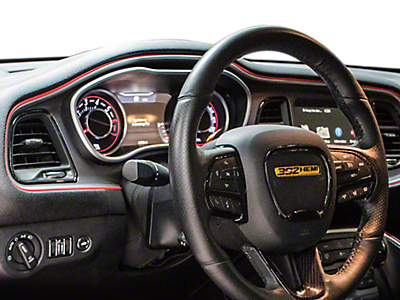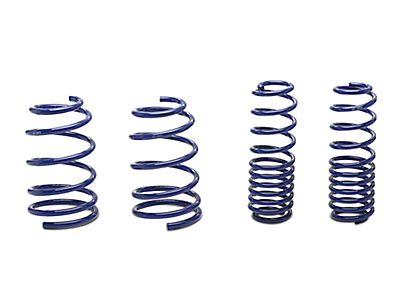2020 Dodge Challenger
The 2020 Dodge Challenger retains the essence of an original 1960s muscle car. It not only comes packing with a variety of powerful engines, but it remains a practical family car with room for four adults and space for cargo in the trunk. The base Challenger SXT and GT have a 3.6-liter V6 with 303 horsepower and 268 pound-feet of torque, driving the rear wheels via an eight-speed automatic (AWD is optional on Challenger SXT and GT). Meanwhile, Challenger RT has a 5.7-liter V8 with 372 horsepower and 400 pound-feet of torque, and you can have it with a standard six-speed manual or optional eight-speed automatic. The Challenger R/T Scat Pack ups the ante with a 6.4-liter V8 pumping out 485 horsepower and 475 pound-feet of torque. But the SRT Hellcat is the one to beat, boasting a supercharged 6.2-liter V8 with 717 horsepower and 656 pound-feet of torque. The ultimate Challenger remains the SRT Hellcat Redeye with 797 horsepower and 707 pound-feet of torque from its retuned supercharged V8 motor.
Affordable Power Gains
The third-gen 6.4-liter Hemi V8 engine in all 2015 and above Dodge Challengers got a moderate bump in horsepower courtesy of a revised intake manifold and updated ECU tuning. Gone is the aluminum long-runner intake manifold of the previous-gen 6.1-liter Hemi V8. Instead, the 6.4-liter V8 (commonly referred to as the 392) has an active intake manifold with an 80 mm side-mounted throttle body. And as with all American V8 engines, the easiest and most cost-effective way to realize modest power gains is to modify how the motor ingests and exhales. Short of boosting the engine or upgrading the internals, installing a larger-diameter throttle body can unleash up to five more horsepower. Larger throttle bodies will increase the airflow and improve the throttle response without necessitating an engine tune. While this may not seem like big gains, what it in fact does is lay a solid foundation for which to build off with future modifications, as a larger throttle body will support much more horsepower than the OEM unit. The next step is to remove the restrictive air box and air filter to make room for an aftermarket cold air intake, allowing the engine to feed on more cold air to improve power further while boosting efficiency.
Reducing Backpressure
The 2020 Dodge Challenger has a free-flowing tubular exhaust manifold similar to aftermarket shorty headers. Shift your attention to the mid-pipes and catalytic converters, an often source of power restriction in any modern car. Installing a set of larger mid-pipes with high-flow catalytic converters will noticeable gains in horsepower and torque, not to mention giving your muscle car a deeper exhaust tone. Aftermarket mid-pipes are usually made of T304 stainless. With a higher nickel and chromium content than both T409 stainless and regular mild steel, T304 is the strongest of the bunch and the most impervious to rust, corrosion and heat discoloration.
Crisper Shifts
If you have a manual Dodge Challenger, you probably noticed the shift action could benefit from some mild tweaking. The throws are too long, and it’s often difficult to engage each gear when driving aggressively. Instead of upgrading the clutch internals, replacing the stock unit with a short throw shifter will significantly improve the shift feel. Short throw shifters change the geometry and leverage of the shift handle, reducing the travel length between gears. This means 2020 Challenger owns can get quicker shifts out of the TR6060 gearbox. Depending on the manufacturer, an aftermarket short throw shifter for the TR6060 can reduce travel by as much as 45% as compared to the OEM shift linkage.


















